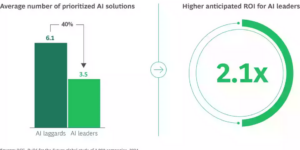The U.S. Treasury’s Federal Insurance Office last week released what it called the “most comprehensive data on homeowners insurance in history.”
Weeks after a U.S. Senate committee released a study and held a hearing on the affect of climate change on homeowners insurance nonrenewals, the FIO’s report also touched on nonrenewal rates as well as the general availability and affordability of homeowners insurance.
Like the Senate’s report, the insurance industry spoke out against what Jimi Grande of the National Association of Mutual Insurance Companies (NAMIC) called FIO’s “failed and flawed” efforts.
Grande, NAMIC’s senior vice president of federal and political affairs, said FIO’s report “is a frustration to anyone who understands the basic insurance principle of matching rate to risk.”
“The analysis notes the multiple factors contributing to the increased cost of providing coverage – including inflation, population shifts, and litigation – but focuses almost exclusively on climate issues, to the detriment of understanding what is really impacting consumers and insurance markets that serve them,” he added.
Related article: Senate Says Climate Is Causing Insurance ‘Crisis’; Industry Strikes Back
David A. Sampson, CEO of the American Property Casualty Insurers Association of America (APCIA), said the FIO report “provides an incomplete explanation about the affordability and availability of insurance.”
“Insurance availability can be best improved by allowing competitive private markets to appropriately price risk according to expected costs, while reducing government rate suppression and policy from constraints,” Sampson added. “Insurance affordability is best addressed through improved mitigation and resiliency programs. APCIA and our members have been supporting dozens of climate mitigation and resiliency programs that can help reduce climate-related losses and make insurance more affordable.”
The data in FIO’s report was provided by the National Association of Insurance Commissioners (NAIC), but according to Sampson NAIC late last year terminated its data-sharing arrangement with FIO, citing concerns about any work produced by FIO that relies on “flawed data” FIO had on hand. NAIC said any conclusions made from FIO’s data set would be “incomplete and misleading.”
The manner in which data were to be collected has been in contention since FIO was first given a directive to work with the states to assess insurance coverage. Originally, FIO proposed to have P/C insurers submit ZIP-code-level homeowners insurance underwriting data to assess climate risk. The office backed off this plan and announced in March 2024 that it would coordinate with NAIC to collect the data.
Related articles: Dear Elon and Vivek: Insurance Commissioners Urge DOGE to Ditch FIO ; Mixed Bag: What Trump 2.0 Tariffs, DOGE Activities Mean For Insurers
The outcome – a report of more than 70 pages released days before a new presidential administration took office – contains information on hundreds of millions of policies from 2018 through 2022, aggregated to ZIP code level. FIO said average nationwide homeowners insurance premiums increased 8.7% faster than inflation during the period, and nonrenewal rates increased. Consumers in high-risk ZIP codes paid more and were nonrenewed at a greater rate.
FIO acknowledged the lack of data for years 2023 and 2024, years during which “public data suggests premiums and nonrenewals increased significantly in some states.”
This article was originally published by Insurance Journal. Reporter Chad Hemenway is the National Editor of Insurance Journal.





















 California Wildfires Had Little Impact on Reinsurers’ Risk Appetite During April Renewals
California Wildfires Had Little Impact on Reinsurers’ Risk Appetite During April Renewals  Tiffany Diamonds Worth $770K Recovered 2 Weeks After Suspect Swallowed Them
Tiffany Diamonds Worth $770K Recovered 2 Weeks After Suspect Swallowed Them  Poor Background Music Choices Can Negatively Impact Work Performance
Poor Background Music Choices Can Negatively Impact Work Performance  Insurance Industry Contemplates Knock-On Effect of Tariffs to Claims, Consumers
Insurance Industry Contemplates Knock-On Effect of Tariffs to Claims, Consumers 
